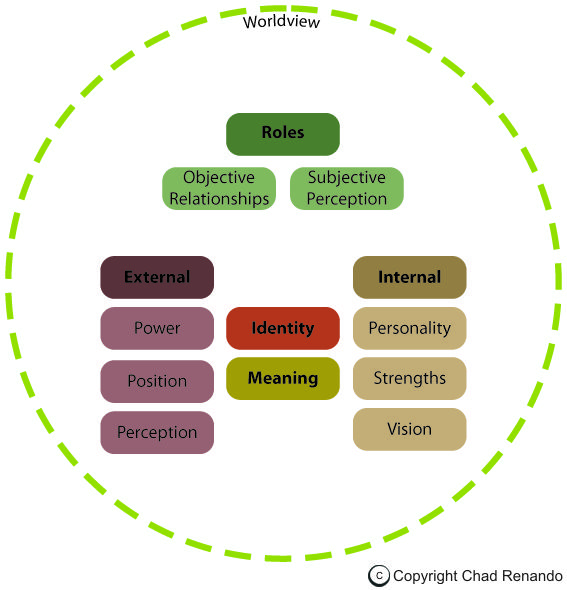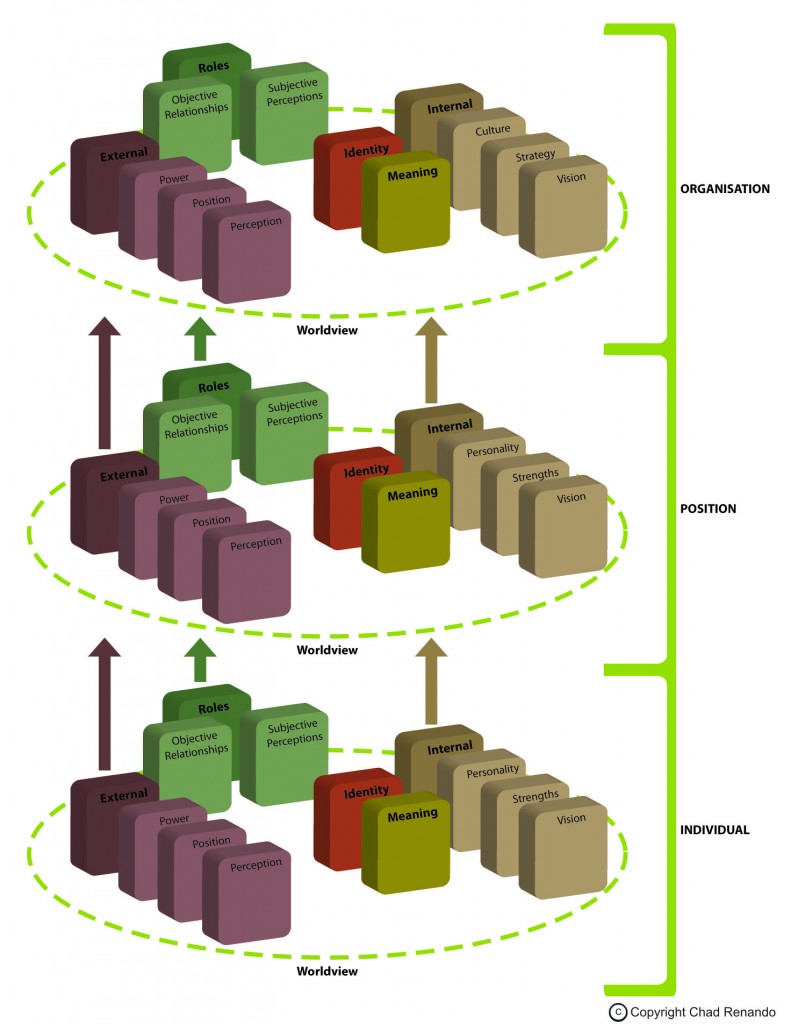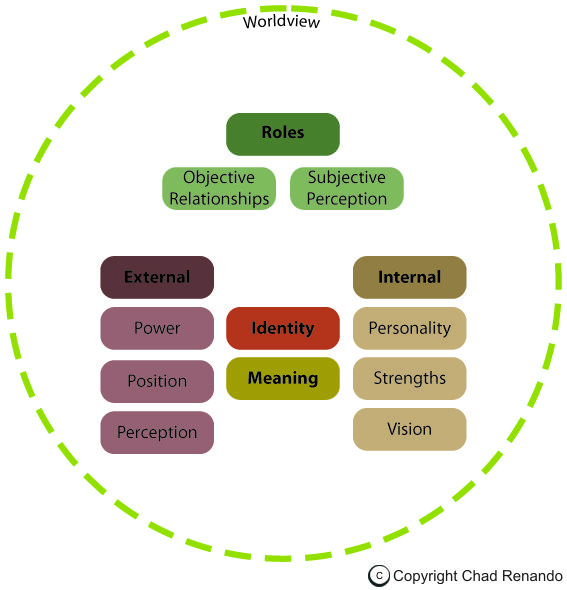A response to “Who am I”? (exploring identity for you, your organisation, and your position in the organisation)
We often hear advice cautioning us against letting work define who we are. Research I did for a recent assignment turns that advice back on itself, as I discover that our interaction with others may be the only way in which we truly know who we are.
The question of our identity is one that burns in me. It motivates my studies, drives my efforts in the organisations I engage with, and resonates in conversations with others. But who are we really? Are you the sum of your personality and experience? Are you what is printed on your position description? Are you who you or I think you are? After a bit of research, I believe the answer is “yes” to all of the above.
To support this response, I propose that our identity comes from three perspectives: roles, internal influences and external pressures. All of this is reinforced and controlled by the worldview in which the identity exists:

Roles
These are our “identity markers”. For example, my personal markers include: husband, father, and son within my immediate family context; board member, delegate, volunteer, and constituent within community organisations; and employee, manager, customer and vendor within my work spheres. In addition to the objective nature of these roles, a subjective component adds emotional satisfaction based on a value attribution of “good” or “bad”, “successful” or “unsuccessful”. This assessment is based on the importance placed on these roles, as well as a comparison to a standard for the roles created by experience, culture, and interpretations of performance of others in similar roles.
Internal
The internal element can be broken down into three elements:
- Personality
Your personality is largely based on your genetic makeup, a bit on your experience and peers, and by the time you are an adult, is largely set in stone. Many are afraid of being put in a box, but no one is a pure type and there is value in getting professional input to understand what makes you “you”. Myers Briggs is a popular model, and I use the Keirsy temperament sorter myself.
- Strengths
While personality can not be easily changed (if at all), your strengths are the core attributes you can develop. These can be considered high level “virtues” as well as discrete tasks that make you feel alive. For high-level, you can check out the “VIA Signature Strengths” test (http://www.authentichappiness.sas.upenn.edu/Default.aspx) and for low level tasks, Marcus Buckingham books are a start.
- Vision
If personality and strengths are what you have to work with, then vision is where you are going. Studies show that your vision of your future direction dictates not only your ability to achieve that vision, but also your perception of yourself as that vision aligns with reality. If your vision is to get away from a negative situation, you will have a more pessimistic view of yourself in the end than if you are moving towards a positive opportunity. How we define goals determines who we are when we achieve those goals
External
External pressures in identity include:
- Power
Power can be broken up into five distinct “types: Expert (I have influence based on my technical expertise); Legitimate (I have influence because of my position), Coercive (I have influence because I can do bad things to you), Reward (I have influence because I can do good things for you) and Referent (I have influence because you like me). The amount and type of power involved in relationships can shape your identity. - Position
Related to power, the position of the relationships has a big impact on your identity. There are two aspects of position to consider: distance, such as an entry level employee working for a public official; and group type, such as the ‘in’ crowd and ‘out’ crowd or gang mentality. - Perception
What people think about is can determine who we are, but not as much as you may think. Finding out that people respect or think less of you can rock your world. However, studies have shown that often people’s assessment has less to do with our identity than our perception of their assessment. Our self-perception can not only act as a barrier to receiving praise or criticism, our projection of what we think of ourselves can become a self-fulfilling prophesy.
Worldview
This depiction of identity occurs within the context of a worldview, with worldview defined as a fundamental belief system that dictates how you approach life and your actions. For the Australian organisation, this is defined as a neoliberal or capitalist approach. For individuals, this can be a belief system or lack thereof.
Identity Alignment: putting it all together
As demonstrated in the diagram below, this model of identity applies to you, the organisations you associate with, and your position within the organisation.



1 thought on “A response to “Who am I”? (exploring identity for you, your organisation, and your position in the organisation)”
Comments are closed.